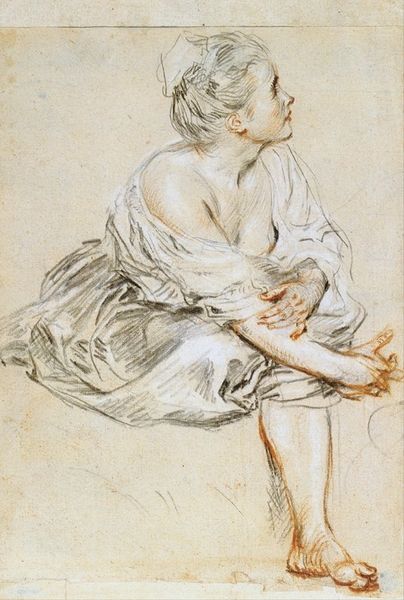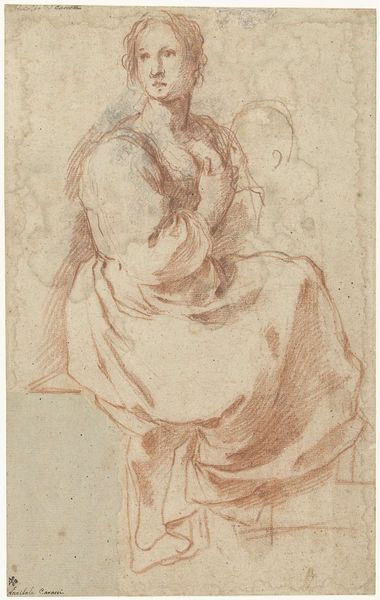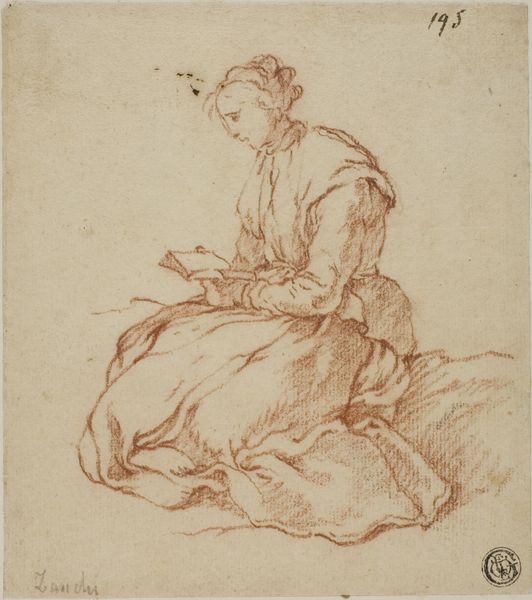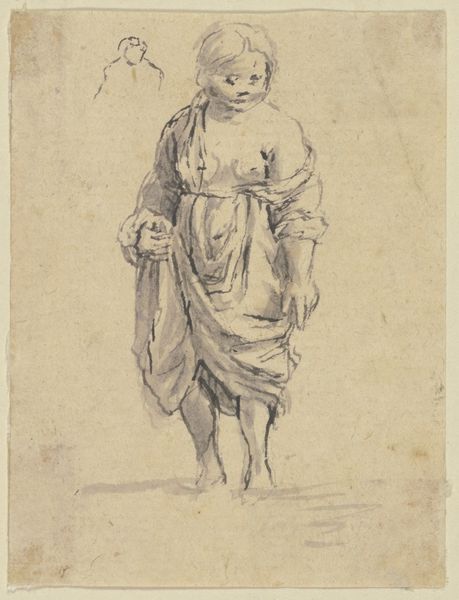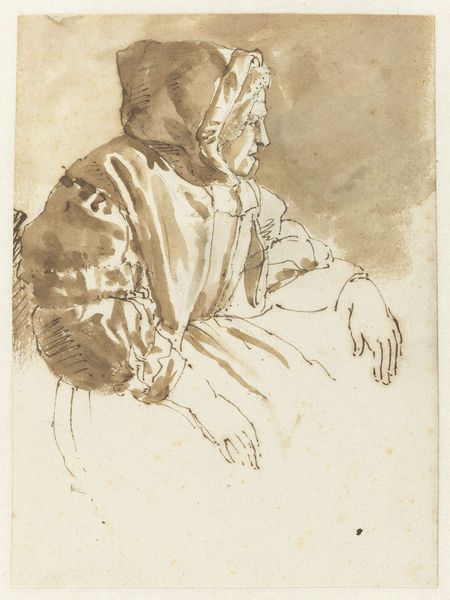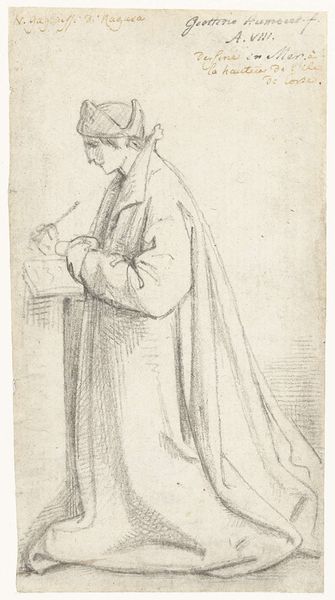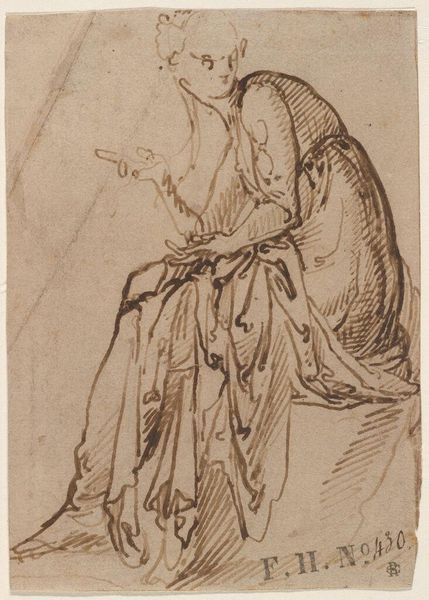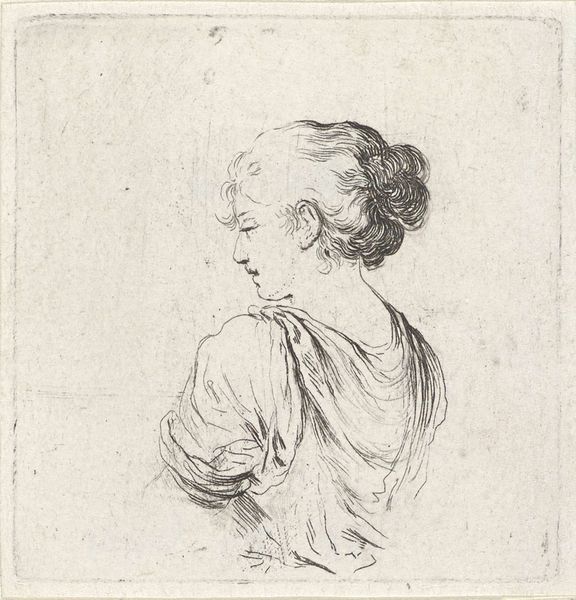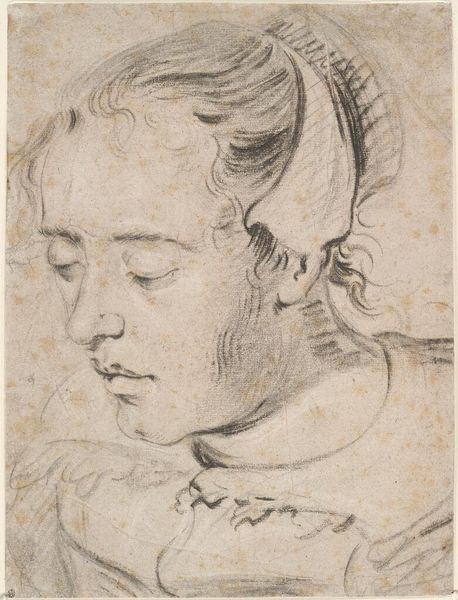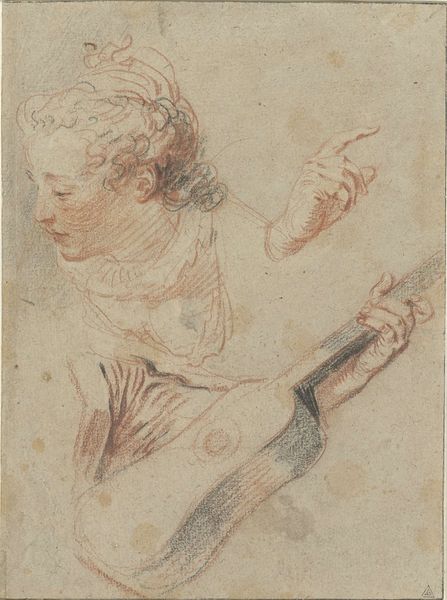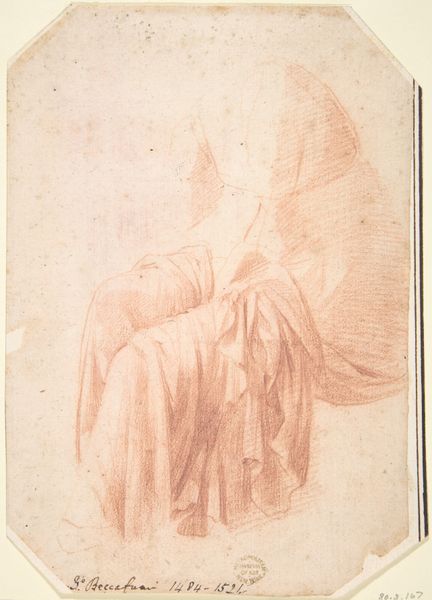
drawing, pencil
#
portrait
#
drawing
#
baroque
#
figuration
#
pencil
Copyright: Public Domain: Artvee
Editor: Here we have Jean-Antoine Watteau’s “Study of a Woman’s Head and Hands,” a pencil drawing from around 1717. The softness of the medium lends the figure an almost dreamlike quality. What strikes you most about the piece? Curator: The visible labor! It’s right there in the exposed construction lines, the delicate application of pencil suggesting the hours of craft involved. These are studies, not polished ‘masterpieces,’ yet they hold an intimate record of Watteau’s artistic process and his dependence on materials that facilitated his social rise. The cost of pencils, the quality of the paper – all influenced who could create such images, no? Editor: Definitely. It also feels so…personal. Is it common for preparatory drawings to focus so intently on hands? Curator: Absolutely. Consider the hands as tools, and also indicators of social class at the time. Delicacy suggested a life without hard labour. Also, the very act of drawing demands an interaction, a material engagement that is fascinating. Editor: That's a good point. We often look at finished works, the 'high art,' but maybe it is more valuable to study the underlying drawings to explore class divisions. Curator: Precisely! Furthermore, think about the patronage system. Who commissioned such studies? Were they destined for a specific work, or circulated among a privileged art world for their aesthetic value alone? Material access defines art production as much as talent, yes? Editor: Absolutely. I hadn’t considered the drawing as a commodity itself, intended perhaps for an educated collector's market rather than simply a step towards a larger painting. This gives me a lot to think about. Curator: Good. Art is never divorced from its making or its economic ecosystem. Remember to analyze it as a product of social labor and consumption.
Comments
No comments
Be the first to comment and join the conversation on the ultimate creative platform.
